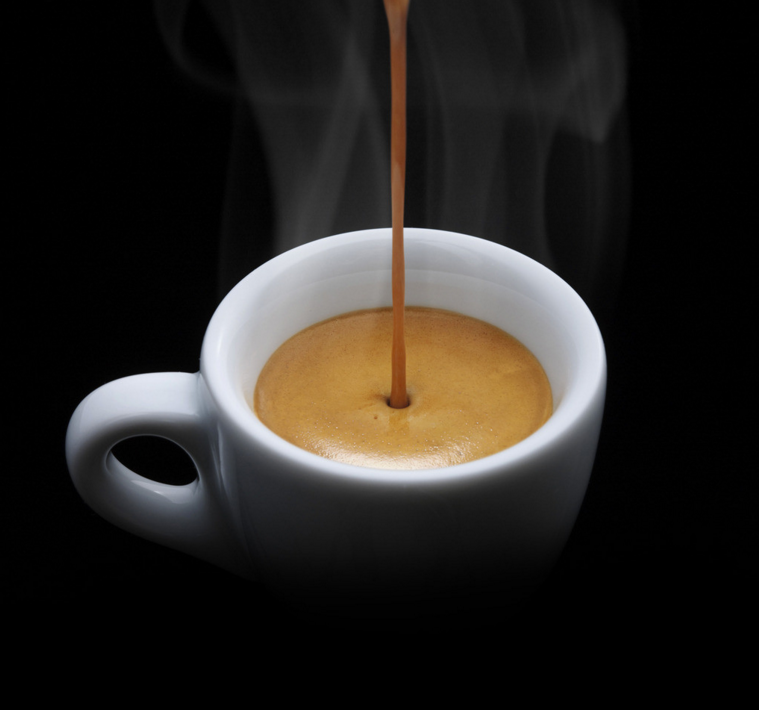Espresso El rule: sweet spot formula
Start with the result that 30cc/ 30sec gets a perfect Espresso. These two values of course depend on beans, and the differences in baking method, baking degree and formula ratio will naturally lead to changes in the reference point.
The amount of extraction is inversely proportional to the extraction time.
The more the amount of extraction, the shorter the time for coffee powder to come into contact with hot water (to avoid excessive extraction).
On the contrary, when the amount of extraction is reduced, the contact time between coffee powder and water should be increased (to avoid insufficient extraction).
Al formula: when the extraction amount of 5cc is increased, the extraction time should be subtracted from 1sec. On the contrary, add 1sec.
For example, when the amount of extraction increases to 45cc, 30-(45-30) / 527, the extraction time is reduced to 27sec.
When the extraction amount is 60cc, the extraction time becomes 24sec.
Within the reasonable limit of Espresso of 0.75-2.5oz, this formula can quickly and correctly hunt sweet spots (Sweet Spot), effectively catch satisfactory ingredients, and maintain the balance between over-extraction and under-extraction. The main means of control is to adjust the grinding thickness.
In addition, Al Critzer also explained the definition of Ristretto:
Ristretto is a very different drink from normal espresso.
If the grinding is constant and the extraction is finished early at the normal espresso flow rate, for example, at the original 30sec/ 30cc flow rate, only 25cc is taken, which is the result of insufficient cup extraction because it has not yet reached the sweet point (Sweet Spot).
The so-called ristretto is defined as restricted, and the customary practice is 25cc/ 30-35sec.
All sensory sensations, including what the eyes see, what the nose smells, and what the tongue tastes, whether it's good or bad, are aggravated.
Ristretto is characterized by a particularly thin mouse tail and a darker brown crema, so it has to be adjusted by grinding. (this article is reproduced)

Important Notice :
前街咖啡 FrontStreet Coffee has moved to new addredd:
FrontStreet Coffee Address: 315,Donghua East Road,GuangZhou
Tel:020 38364473
- Prev

What coffee farms are there in Indonesia?
Coffee cultivation in Indonesia began at the end of the 17th century and was transplanted from India by the Dutch East India Company to Jakarta, Java. The variety was Arabica Typica, which soon spread to Sumatra in the northwest of Java and Sulawesi in the northeast. The Dutch changed to disease resistance after a large-scale outbreak of rust in Java in the 1880s
- Next

Coffee beans in Vahana Manor Coffee Manor Coffee producing areas in Indonesia
Balinese residents are mainly Balinese, because historically under the influence of Indian religion and culture, most of them believe in Hinduism. There are more than 12500 temples on the island, so Bali is also known as the island of thousands of temples. Balinese classical dance is elegant and colorful, which has a unique position in the world dance art. Bali is not only beautiful and charming in natural scenery, but also rich in cultural and social customs.
Related
- Does Rose Summer choose Blue, Green or Red? Detailed explanation of Rose Summer Coffee plots and Classification in Panamanian Jade Manor
- What is the difference between the origin, producing area, processing plant, cooperative and manor of coffee beans?
- How fine does the espresso powder fit? how to grind the espresso?
- Sca coffee roasting degree color card coffee roasting degree 8 roasting color values what do you mean?
- The practice of lattes: how to make lattes at home
- Introduction to Indonesian Fine Coffee beans-- Java Coffee producing area of Indonesian Arabica Coffee
- How much will the flavor of light and medium roasted rose summer be expressed? What baking level is rose summer suitable for?
- Introduction to the characteristics of washing, sun-drying or wet-planing coffee commonly used in Mantenin, Indonesia
- Price characteristics of Arabica Coffee Bean Starbucks introduction to Manning Coffee Bean Taste producing area Variety Manor
- What is the authentic Yega flavor? What are the flavor characteristics of the really excellent Yejasuffi coffee beans?

